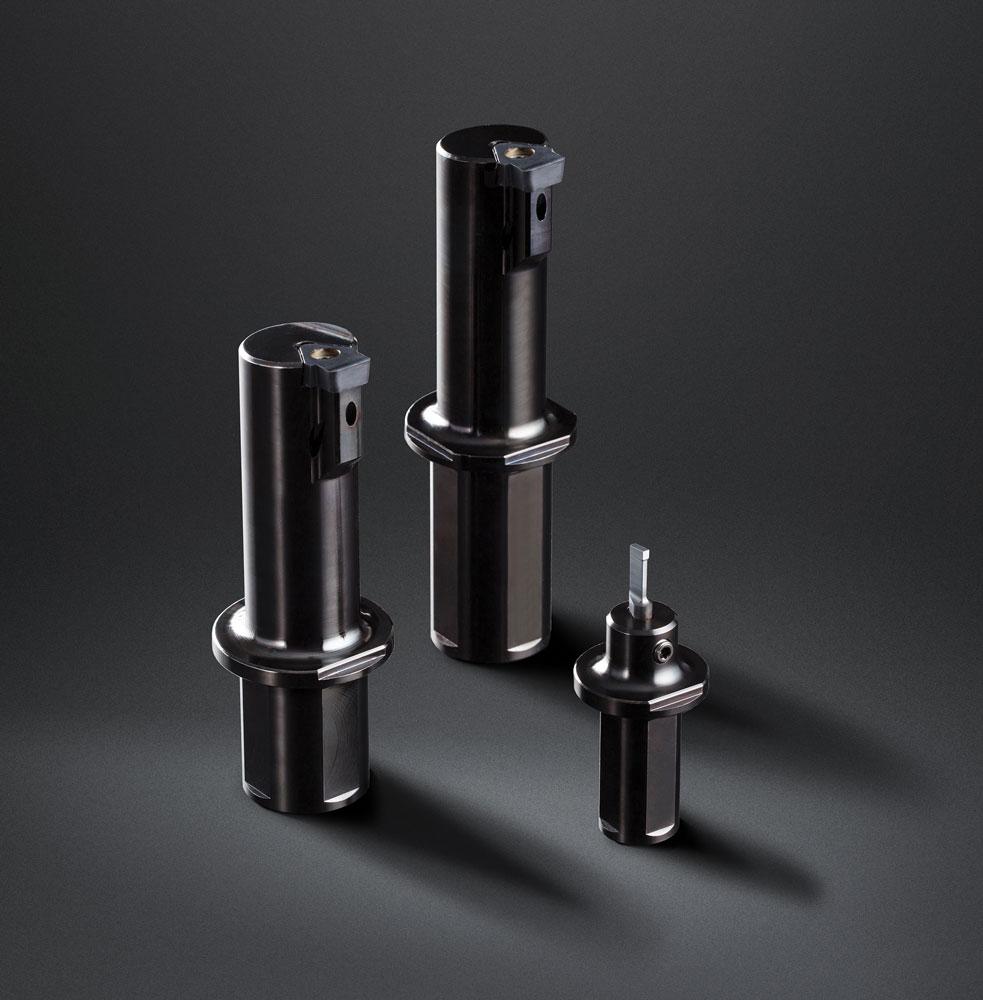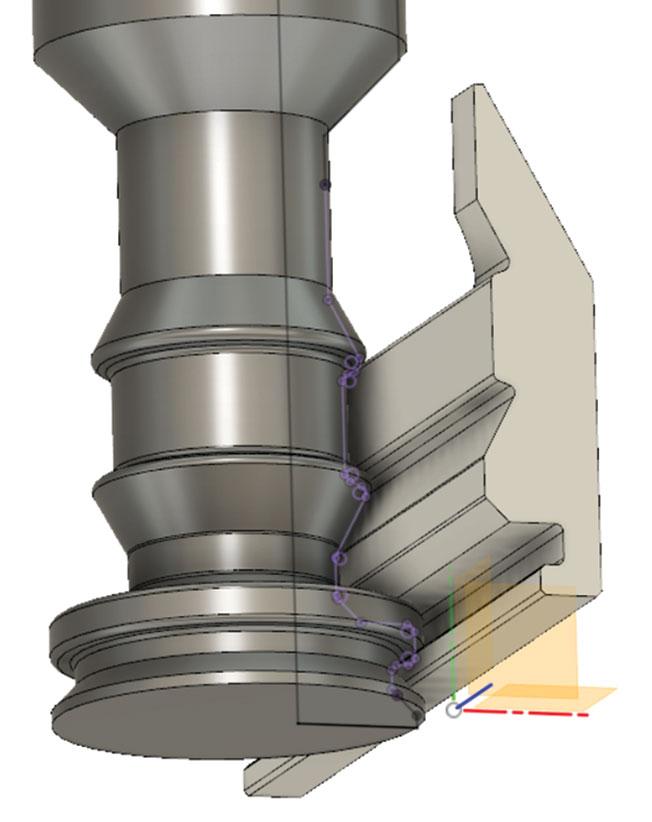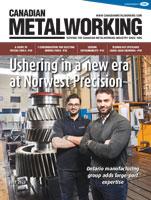Associate Editor
- FMA
- The Fabricator
- FABTECH
- Canadian Metalworking
A guide to special tools
Custom tools are not for everyone, but some applications demand them
- By Lindsay Luminoso
- July 21, 2023
- Article
- Cutting Tools

According to Yair Bruhis of YG-1, tailored or special tools are more high-performance tools and are not designed for general purpose. Instead, they are based on the application and can include special carbides, geometries, or coatings, like the DLC coating on the ALU-POWER HPC solid-carbide end mill. YG-1
When a shop takes on a project and starts to look at the machining process, it most often reaches for standard or general-purpose tools. These tools are off-the-shelf options that can be purchased easily. However, as applications become more complex, standard tools don’t always cut it.
“Tailored or special tools are more high-performance tools,” said Yair Bruhis, global product and application manager, YG-1 USA, Vernon Hills, Ill. “These tools are no longer for general purpose. Instead, they are based on the application and can include special carbides, geometries, or coatings depending on if the application warrants it.”
Special tools can be as simple as adding an advanced coating or changing the length of the shank to one that is currently unavailable as a standard size, or as complex as a situation where standard tools, which generally have five or six flutes, can’t accommodate an application that warrants upwards of 12 flutes, requiring something custom.
Find out more about what information is needed to develop a special tool?
“There is this inclination for shops to buy a standard tool and modify it themselves or send it out to a grind shop for modification,” said Damon Wherry, technical design supervisor, Horn USA, Franklin, Tenn. “A lot of the time, this is more hectic than helpful, especially because this modification process essentially grinds all the coating away and reduces tool life. Instead, a special tool should extend tool life and better perform operations.”
However, not all applications make sense for a special tool. Most shops are happy with a standard tool as long as it performs how it needs to.
“Many shops like to use standards because they don’t want to wait or rely on a tooling supplier,” said David Vetrecin, product manager, holemaking, ISCAR, Oakville, Ont. “However, once a shop has implemented one, it often finds that the special tool opens up lots of possibilities. In today’s manufacturing environment, shops increasingly need to think out of the box to compete. If shops aren’t open to new ways of doing things, they may lose out on some opportunities.”
While special tools can be more expensive, there is a break-even point. For low-volume part runs, it doesn’t necessarily make sense to invest in a special tool. But if volume warrants it or there is an ongoing job that requires it, a special tool is the way to go.
“For example, for a shop that’s doing millions of automotive parts, and a special tool can save four or five seconds per part, that’s a huge amount of time savings,” said Vetrecin. “But a shop doing a few one-offs may not necessarily see the value.”
Shops working with very expensive castings or high-value materials like in the aerospace sector, where scrapping parts is not an option, may find that a special tool is a great way to reduce or eliminate the errors.
“A special tool has already been proven out,” said Lee Goad, technical supervisor, Horn. “It can be a plug-and-play option where a shop doesn’t have to do a lot of programming, offsets, or manipulations to get it to where it will finally cut a good part. There isn’t a need for trial and error with special tools because all of that is built into the design and build process of it.”

In drilling, it’s easy to do with a tool that combines drilling and chamfering, or drilling, counterboring, and chamfering (shown here). ISCAR
Another area where specials make sense is when working with workpieces with complex forms that cannot be accomplished with a standard tool. In these instances, shops may look for a number of different standard tools, but nothing may meet the necessary requirements.
“For example, an aerospace disc and blade assembly requires a very specific complex fit and root form on the parts where there is not one single standard tool available to machine that form,” said Jason Wells, president, Tech Hub, KYOCERA SGS Precision Tools, Danville, Va. “Specials can be designed based off of that form, where up to five operations can be combined to make it happen.”
Wells noted that while many operations can be combined in one tool—for example, drilling, interpolation, back chamfering, front chamfering, and boring— it’s important that those operations makes sense together.
“Don’t get too design-happy,” said Wells. “It’s important to look at the application and really understand the physics behind it. Partnering with a good tool supplier that will push the envelope but not overreach is a good place to start because the tool is only as good as its weakest feature. Sometime there can be expectations that may not be feasible or the most effective. A certain geometry on the platform can lose function quickly while others are still useable, but that means the tool life is dictated by that weakest feature. A tooling supplier should advise what works, but that could mean two tools that do two operations each that will last three times as long as a single tool that does four operations. It's all about finding the right configuration.”
Limitations of Working With a Special Tool
Exploring a special tool is not always front of mind for shop owners, especially if there isn’t an immediate need for one. And while there is absolutely a time and place for special tools, there are some things to consider that may come into play when looking to invest.
Higher Upfront Cost. There is a lot of research and information that goes into the design and development process, often making these tools more expensive than their standard counterparts.
“That upfront cost can be off-putting at first, and some may not immediately see the value in paying that higher price,” said Bruhis. “But there is a convenience and benefit to using them, and it’s important to not let that initial cost get in the way.”
Wells noted that standard tools are priced according to market conditions and often stay within a certain range, depending on what the market will bear. With specials, the price can fluctuate dramatically.
Longer Lead Times. Similar to a varying price point, the lead times from inquiry to putting the tool on the machine can be longer than ordering a standard out of a catalogue.
“It is not coming off the shelf, so there is a lead time associated with it,” said Bruhis. “Some Tier 1 and OEM users may not want to deal with them because of this longer process. They prefer to open the website or catalogue, choose a tool, and have it within a certain timeframe. If that works, that’s the best option, but that’s not ideal for everyone.”

A special tool can be used to broach a gear form or keyway inside one machine while it’s still chucked up from the previous operation. Horn provides standard and made-to-order tools for a variety of broaching applications. Horn
May Not Be What Was Expected. Not all special tools are designed well, which is why it is important to partner with a tool supplier that has experience with custom tooling and can make recommendations or even suggest other options when it doesn’t make sense.
“It’s not necessarily about combining everything into one tool,” said Wherry. “It’s important to get all the information and quote a package of tools that suits the application needs. That could be a special, but it also could be a package of tools. This could include a special tool, but it also could include several standard tools. It’s not about pushing a special, it’s about finding the right option or options.”
This may not be exactly what a shop expects but, in many cases, it will lead to better results.
“When combining operations, it’s important to be realistic,” said Wells. “Be cognizant of drastic diameter changes. One operation in a 1 in. diameter combined with another that requires a ¼ in. diameter can be a massive diameter transition and step down. While a user may want this, it may not work; and if it does, it may be a very expensive proposition.”
May Require Extra Optimization. With special tools, it’s important to know that it isn’t always correct right off the bat. There are some tweaks and adjustments that need to be made either to the tool or the process for it to be effective.
“If one feature is wearing faster than another, there is the option to re-engineer the geometry, whether that’s adding a rake angle or putting in an edge prep, to extend tool life of the feature that is prematurely wearing,” said Wells. “It could even be adding an optimized coating. There are a lot of optimizations that have to happen to finally get the tool exactly where you want it.”
Benefits of Working With a Special Tool
There are some applications that demand a special tool, and others where a special may be preferrable. There are many ways these tools can enhance machining operations.
Reduces Cycle Times. Any machine shop will tell you that time is money, and saving even a few seconds of cycle time can be a huge boon in production value.
“There's a massive impact when you can use a better tool, like an end mill with a specialized coating, that shaves a minute or two off cycle time,” said Wells. “Over thousands of parts, that adds up. However, if you go in with a special tool that combines three operations, it can shave off five or six minutes off an application over those thousands of parts, creating even more significant gains with fewer resources required.”
Combining operations in one tool is one of the most common ways for shops to reduce cycle time and produce parts faster.

While many operations can be combined in one tool—for example, drilling, interpolation, back chamfering, front chamfering, and boring— it’s important that those operations makes sense together. Kyocera SGS Precision Tools
“In drilling, it’s easy to do with a tool combining drilling and chamfering, or drilling, counterboring, and chamfering,” said Vetrecin. “In milling, for a slotting application, you can do multiple different steps in one operation instead of a doing each one by themselves.”
Decreases Part Handling. Combining operations in a single tool means that one tool on one machine can be used to perform multiple operations. This limits the potential for a part to be moved to a different machine or handled in any way.
“A special can make it possible to have all operations done on a single machine, where before, the operation may have needed to be outsourced or moved throughout the shop,” said Goad. “While it may add a little more cycle time, the benefits of having a completed part done on one machine are huge. This also adds to part quality, as you can control all the quality aspects in-house rather than relying on other companies or the challenge of setting up correctly on multiple machines.”
Goad uses the example of broaching and gear hobbing. Many years ago, shops would’ve machined all the part features on one machine except simple keyways, internal forms with square corners, or gear/spline forms, then move the part for secondary operation on a pull broach or gear hobbing machine where they would finish the component. This required some shops to send out these parts to shops that could cut these features.
“Because of this, there has been a shift to think about doing it all on one machine rather than having to send it out to someone who does gear cutting,” said Goad. “Today, a special tool can be used to broach the gear form or keyway inside the machine while it’s still chucked up from the previous operation.”
Leads to Overall Cost Savings. While the initial cost of the tool may seem steep, there are other cost savings associated with a special tool.
“When we take three tools and combine them into one, that means only one toolholder is needed,” said Wells. “You only need to purchase and keep one in inventory. That also means one tool setting, one tool change, it eliminates all of this. It may be a more expensive tool on the onset, but overall, there can be ancillary cost savings.”
Reducing cycle time, handling, scrap, and everything else that goes along with a special tool translates into huge cost savings.
“In the long run, and sometimes even immediately, the benefits of a special tool can outweigh the cost of that tool,” he said.
Offsets Machine Limitations. There are many scenarios where a special or custom tool is needed, but it is particularly helpful in dealing with equipment limitations.
“For example, a milling machine may have a limited number of toolholders available so operations may need to be combined in a special tool to maximize the machine’s existing toolholding capacity,” said Vetrecin.
Another example of where a special tool would make sense is in a job shop environment where aggressive work quoting takes place.
“The shop may be awarded a job and realized that it doesn’t have a machine to run the specific part or feature,” said Wells. “It may have a 3-axis, but really needs a 5-axis machine. A special tool can be cleverly designed, for example, with an undersized shank with a larger cutting head to reach down into a bore on a 3-axis, where a 5-axis would be able to pivot to fit into that hole.”
Another challenge could be issues with rigidity where a special tool can be designed with this obstacle in mind and make up for the machine limitations.
“Every machine environment has different variables that come into play, such as deflection,” said Wells. “A special tool can be designed to meet tight tolerances that are unable to be achieved with a standard. With extremely tight tolerances, special tools can be designed to take into account deflection as well as coating thickness to achieve certain quality requirements.”
Removes Skills Barriers. A special tool is often designed by experts in the field who have deep knowledge and understanding of the machining process. This means that all the guesswork has been taken out of the process.
“Our workforce isn't as strong as it was back in the ‘90s,” said Goad. “For example, a general operator may not be as familiar with certain aspects of the machining trade. With a special tool, it can control all features in one tool. A standard tool can’t do that, and that means that an inexperienced operator may take time to chase down different tools and process everything individually. The special tool can provide peace of mind and consistency for all operators.”
Associate Editor Lindsay Luminoso can be reached at lluminoso@canadianmetalworking.com.
Horn, www.hornusa.com
ISCAR Cutting Tools, www.iscar.com
Kyocera SGS Precision Tools, www.kyocera-sgstool.com
YG-1, www.yg1.ca
About the Author

Lindsay Luminoso
1154 Warden Avenue
Toronto, M1R 0A1 Canada
Lindsay Luminoso, associate editor, contributes to both Canadian Metalworking and Canadian Fabricating & Welding. She worked as an associate editor/web editor, at Canadian Metalworking from 2014-2016 and was most recently an associate editor at Design Engineering.
Luminoso has a bachelor of arts from Carleton University, a bachelor of education from Ottawa University, and a graduate certificate in book, magazine, and digital publishing from Centennial College.
subscribe now


Keep up to date with the latest news, events, and technology for all things metal from our pair of monthly magazines written specifically for Canadian manufacturers!
Start Your Free Subscription- Trending Articles
Sustainability Analyzer Tool helps users measure and reduce carbon footprint

Mitutoyo updates its end-user portal

Enhance surface finish with high-speed machining

Equispheres secures $20 million investment round

Solid carbide drills produce precision holes in short chipping materials

- Industry Events
Automate 2024
- May 6 - 9, 2024
- Chicago, IL
ANCA Open House
- May 7 - 8, 2024
- Wixom, MI
17th annual Joint Open House
- May 8 - 9, 2024
- Oakville and Mississauga, ON Canada
MME Saskatoon
- May 28, 2024
- Saskatoon, SK Canada
CME's Health & Safety Symposium for Manufacturers
- May 29, 2024
- Mississauga, ON Canada















